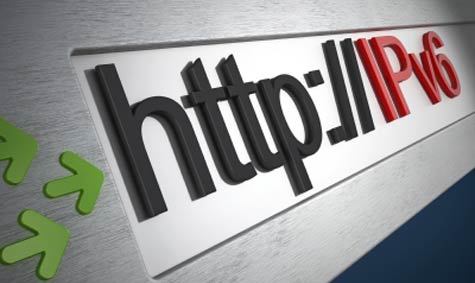This excerpt from a Network World story is what at least the beginning of success looks like for the folks who have been pushing Internet Protocol version 6 (IPv6) for a decade or more:
If you go to Google or Facebook through a major carrier in the U.S., Germany or France, for example, there’s a decent chance you’re using IPv6 [Internet Protocol, Version 6], the next-generation system that has so many addresses that the world may never use them up. Though it’s pretty much invisible to end users, the new protocol is already making service providers’ networks run better and may be speeding up your connections, too.
The story reports on the latest figures from the Internet Society. The organization found that more than 66 percent of Verizon Wireless connections to “big websites” used the new protocol. More than 53 percent of T-Mobile USA’s traffic was IPv6.
The encouraging numbers represent only the beginning of success, because they are focused on mobile data. Wired networks are in on the action, though they are trailing. AT&T’s wired network is at 46 percent IPv6 use and Comcast at about one-third. Deutsche Telekom and Free are just under 30 percent.
Other carriers are behind, but starting to play catch up. In the UK, for instance, Sky—three years after saying that it was preparing for IPv6—is starting consumer trials. The issues that will be studied in the trials include lack of IPv6 support from other ISPs and the impact of the universe of deployed routers and consumer devices that are not IPv6 capable.
The development and painfully slow rollout of IPv6 predates the emergence of the Internet of Things (IoT) and even the ascendance of mobility to the top of the telecom heap. Once those hit, they became poster children for the need for IPv6: After all, if everyone’s refrigerators and microwaves will have their own IP address, the world will need a lot of IP addresses.
Part of that statement remains true. We will need a tremendous number of IP addresses and a lot of the demand will stem from mobility and the IoT. However, the assumption that every connected device will need its own connection to the Internet may be overstating things. At Network Computing, Azmi Jafarey makes the point that the Internet can be bypassed in many cases. In the stereotypical connected kitchen scenario, the appliances can just as effectively communicate with a central node or device using a non-IP protocol. Then, only the consolidating device would reach out via IP to the Internet to deliver messages on behalf of the toaster and blender.
However, not all the IPv6 news is moving in the acceptance and rollout direction. PCWorld reports that the U.S. Department of Defense (DoD) has not converted to IPv6 as it had promised to do. The DoD’s efforts and promises go all the way back to demonstrations of the technology in 2008. IPv6 was disabled at that point, according to the story, due to security concerns and lack of trained personnel.
The department released a redacted version of an internal report that cited the shortcomings of IPv4 on the battlefield and extolled the advantages of IPv6. According to PCWorld, the process has not moved forward:
The Inspector General’s report suggests the DoD’s effort has been half-hearted, with potential implications that extend to the battlefield. Those in the department who were responsible for implementing IPv6 didn’t make it a priority, coordinate their efforts or use available resources, the report said.
The Inspector General made some recommendations aimed at correcting the problems and accelerating what the report maintains is a necessary technology.
Carl Weinschenk covers telecom for IT Business Edge. He writes about wireless technology, disaster recovery/business continuity, cellular services, the Internet of Things, machine-to-machine communications and other emerging technologies and platforms. He also covers net neutrality and related regulatory issues. Weinschenk has written about the phone companies, cable operators and related companies for decades and is senior editor of Broadband Technology Report. He can be reached at cweinsch@optonline.net and via twitter at @DailyMusicBrk.




